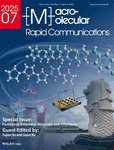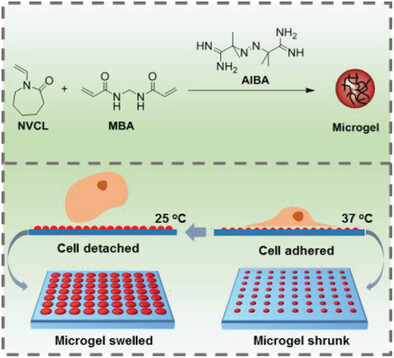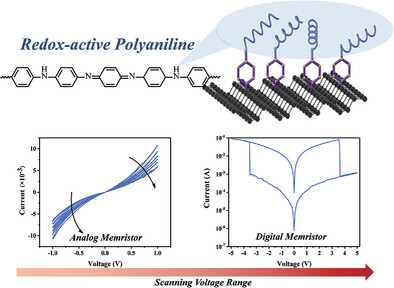Journal list menu
Export Citations
Download PDFs
Cover Picture
Functional Polymeric Materials and Interfaces
- First Published: 04 April 2025
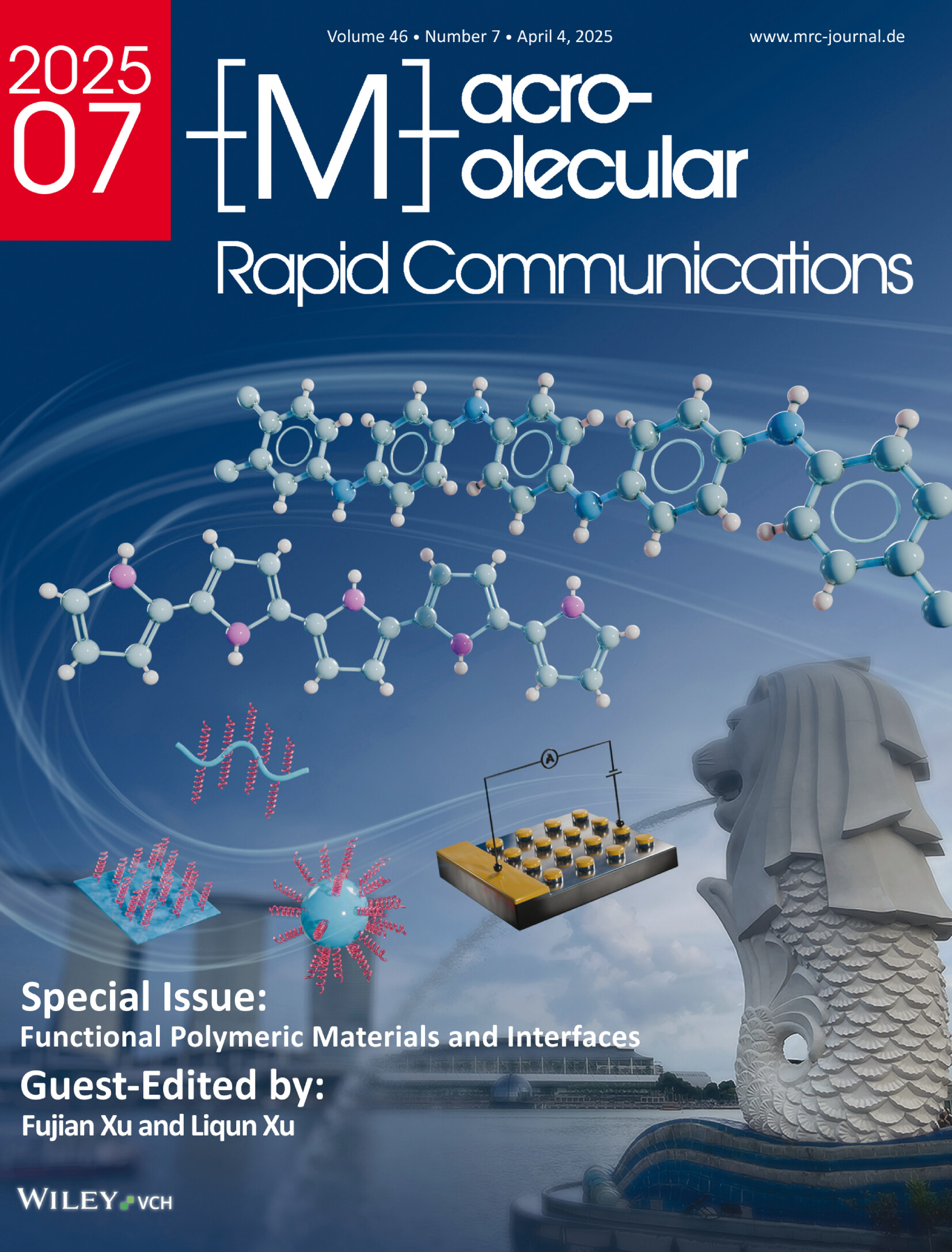
Front Cover: Researchers in polymer chemistry, materials science, and surface engineering have come together to organize this special issue to honor the 40-years of remarkable research achievements in functional polymeric materials and interfaces of Professors En-Tang Kang and Koon-Gee Neoh's former team at the National University of Singapore (NUS). More details on the special issue “Functional Polymeric Materials and Interfaces” can be found in the editorial 2500060 by Fujian Xu and Liqun Xu.
Issue Information
Guest Editorial
Review
Soft Actuators and Actuation: Design, Synthesis, and Applications
- First Published: 08 June 2024
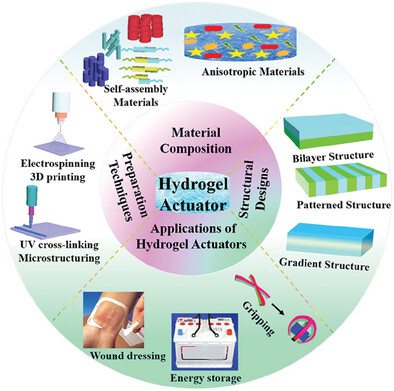
Soft actuators, especially those from hydrogels, offer flexibility, responsiveness, and intricate deformations for applications in soft robotics, artificial muscles, and biomedicine. This review covers their material composition and design techniques, such as 3D printing and microfabrication. It explores applications in biomedical, robotics, microfluidics, and energy systems, addressing challenges, advancements, and regulatory aspects.
2D Atomic-Molecular Heterojunctions toward Brainoid Applications
- First Published: 05 August 2024

2D atomic-molecular heterojunctions (2DAMHs) denote a class of advanced materials synthesized through covalent bonding of functional molecules with 2D materials, surpassing conventional heterostructures in bonding strength. This review concisely outlines the electronic characteristics of 2DAMHs and their implications for brainoid applications, further examining the contemporary status and prospective evolution of 2DAMH devices from a materials perspective.
Research Article
Preparation of Temperature-Responsive Films Based on PNVCL Microgel with Varying Sizes and Cross-Linking Degrees for Cell Harvesting
- First Published: 29 April 2024
Building Uniformly Structured Polymer Memristors via a 2D Conjugation Strategy for Neuromorphic Computing
- First Published: 16 April 2024
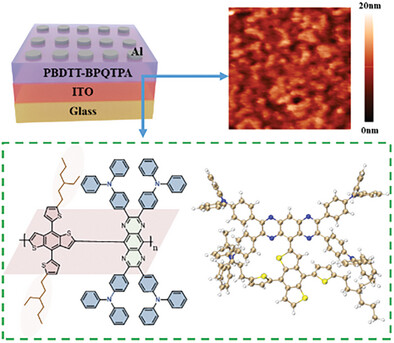
A novel 2D conjugated polymer PBDTTT-BPQTPA is synthesized via Stille coupling copolymerization. The fabricated Al/PBDTTT-BPQTPA/ITO memristor demonstrates non-volatile, rewritable memory capabilities under high voltage conditions, as well as history-dependent memristive behavior at lower voltages. Remarkably, this polymer-based memristor emulates the learning principles of human neural synapses, not only executing basic Boolean logic operations but also facilitating decimal arithmetic computations.
Regulating the Chiroptical Expression of Aggregated Solvophobic Core by Solvophilic Segments
- First Published: 29 April 2024
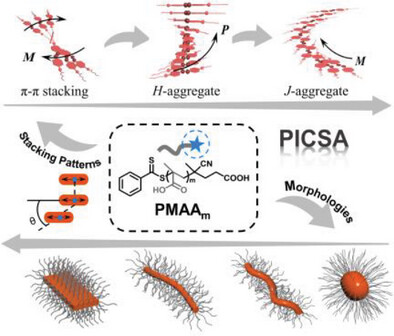
The solvophilic or solvophobic chains can have a synergistic effect on the stacking structure and morphology of the Azo-BCP assemblies. This provides experimental evidence for the influence of solvophilic chains length on the nucleation phase, and offers new insights into the regulation of the chiroptical properties of the BCP system.
Construction of Zwitterionic Coatings with Lubricating and Antiadhesive Properties for Invisible Aligner Applications
- First Published: 02 June 2024

A simple and feasible glycidyl methacrylate-assisted coating strategy is adopted to construct zwitterionic poly(sulfobetaine methacrylate) coatings on polyethylene terephthalate glycol (PETG) via the “grafting to” and “grafting from” approaches. The coatings are not affected the transparency, mechanical properties, or biocompatibility of the PETG sheet and significantly improve its lubricating, antifouling, and antiadhesive properties, showing great potential for invisible aligner applications.
Improved Cell Adhesion on Self-Assembled Chiral Nematic Cellulose Nanocrystal Films
- First Published: 24 June 2024
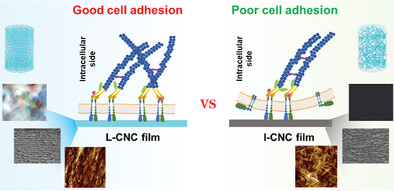
Herein, this work provides evidence that left-handed self-assembled chiral nematic CNC films (L-CNC) significantly enhance the adhesion of L929 fibroblasts through integrin pathways. Immunofluorescence staining and Western blot analysis reveal upregulation of talin and improved assembly of F-actin as key factors promoting cell adhesion on L-CNC films compared to randomly arranged isotropic CNC films (I-CNC).
Exploiting Photoinduced Atom Transfer Radical Polymerizations with Boron-Dopant and Nitrogen-Defect Synergy in Carbon Nitride Nanosheets
- First Published: 07 June 2024

Because of the increased availability of catalytic sites, BCN nanosheets with boron dopants and nitrogen defects promote intermolecular single electron transfer to the initiator, maintaining radical intermediates at a low concentration for better control of photoinduced atom transfer radical polymerization (photo-ATRP) under blue light illumination, outperforming bulk graphitic carbon nitrides (g-C3N4), yielding polymers with low dispersity and tailorable molecular weights.
Tough Self-Healing Materials via In Situ Growth of Zeolitic Imidazolate Framework-8 Nanocrystals in Polymers
- First Published: 23 July 2024
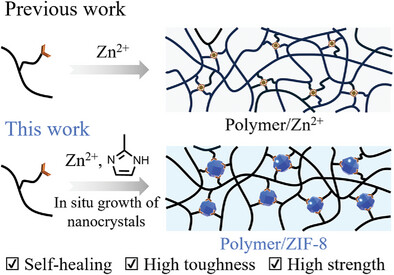
A strong and tough self-healing composite is constructed via in situ growth of zeolitic imidazole framework-8 (ZIF-8) nanocrystals in imidazole-containing polymer networks. In contrast to the pure zinc cation cross-linking system, the composite can exhibit enhanced tensile strength and toughness by 43% and 100%, respectively. It proves that incorporating metal–organic framework (MOF) noncrystals into self-healing polymers is highly promising.
Development of α-Tocopherol Loaded PLGA Nanoparticles and Its Evaluation as a Novel Immune Adjuvant
- First Published: 09 July 2024

TOC-PLGA NPs as a novel nanoparticle-immune adjuvant with well-controlled particle size and high loading capacity, having synergetic effects of both TOC and PLGA NPs, can promote antigen uptake by RAW 264.7 cells. Furthermore, they can strongly upregulate the expression of co-stimulatory surface molecules and the secretion of cytokines by these macrophage cells, exhibiting a strong immunostimulatory effect.
The Conjugated/Non-Conjugated Linked Dimer Acceptors Enable Efficient and Stable Flexible Organic Solar Cells
- First Published: 18 July 2024
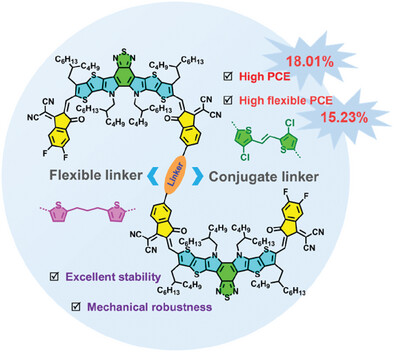
The conjugated dimer acceptor DY-TVCl and the non-conjugated dimer acceptor DY-3T are developed, in which the highest power conversion efficiency (PCE) of 18.01% is achieved for the DY-TVCl-based OSCs, and demonstrates excellent stability. Notable PCE of 15.23% is achieved for DY-TVCl-based flexible devices by blade-coating.
Self-Crosslinking AuNPs Composite Hydrogel Bolus for Radiophotothermal Therapy
- First Published: 29 July 2024

This study introduces a novel self-crosslinking gold-nanoparticles hybrid composite hydrogel bolus, prepared via a one-pot method for radiophotothermal therapy. The hydrogel boasts high mechanical strength, significant antibacterial properties, and precise near-infrared light absorption. It aims to enhance therapy precision and effectiveness, demonstrating good biocompatibility and excellent surface adhesion, offering new possibilities for treatment accuracy.
Optimizing Active Layer Morphology of Organic Solar Cells by Constructing Random Copolymers with Simple Third Units
- First Published: 29 July 2024
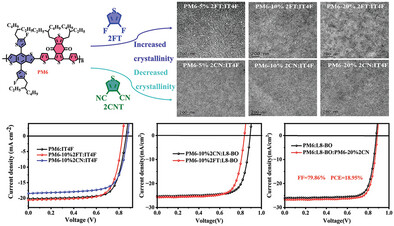
In this work, the polymer structure of PM6 is reconstructed by introducing simple units of difluoro-substituted thiophene (2FT) or dicyano-substituted thiophene (2CNT), respectively, and the regulation of polymer crystallization characteristics and optimization of active layer morphology is achieved.
Redox-Active Polyaniline Covalently grafted Black Phosphorus Nanosheets for Integrated Digital-Analogue Memristors
- First Published: 12 September 2024
A Novel Curcumin-Loaded Nanoplatform Alleviates Osteoarthritis by Inhibiting Chondrocyte Ferroptosis
- First Published: 18 September 2024
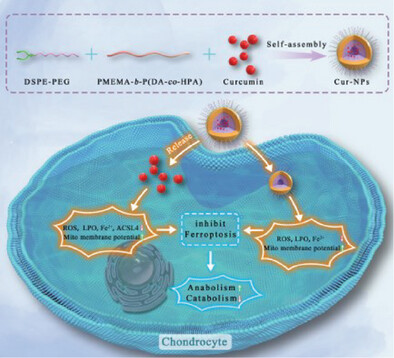
In this work, the curcumin-loaded nanoparticles (Cur-NPs) are prepared through the self-assembly of PMEMA-b-P(DA-co-HPA), DSPE-PEG, and curcumin in an aqueous solution. Cur-NPs exhibit the ability to suppress chondrocyte ferroptosis by regulating ROS, Fe2+, and ACSL4 levels. Additionally, Cur-NPs maintain the anabolic and catabolic balance in IL-1β-treated ATDC5 cells.
Enzyme-Responsive Micelles with High Drug-Loading Capacity for Antitumor Therapy
- First Published: 30 August 2024
Dimeric Small Molecule Acceptors via Terminal-End Connections: Effect of Flexible Linker Length on Photovoltaic Performance
- First Published: 03 September 2024
Soluble Polyimide Coated UHMWPE Fibers with Multiple Property Enhancements: Surface Activity, Tensile Strength, Heat Resistance, Acid Resistance, and Erasability
- First Published: 10 October 2024
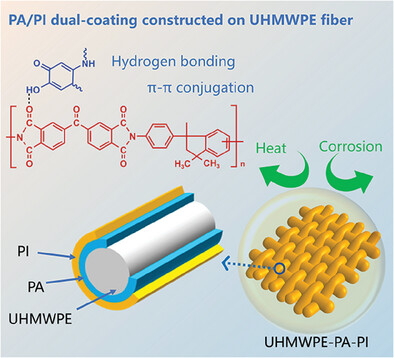
In this study, a dual coating of polycatechol/polyamine (PA) and polyimide (PI) is constructed on the surface of ultrahigh molecular weight polyethylene (UHMWPE) fiber. The chemical activity, temperature resistance, and tensile strength of the UHMWPE fiber are improved. The PI coatings also demonstrate thermal insulation, acid resistance, and erasability. This modification strategy is efficient, simple, and less damaging.
A Facile Method in Fabricating Flexible Conductive Composites with Large-Size Segregated Structures for Electromagnetic Interference Shielding
- First Published: 26 October 2024

This study proposes a facile method for preparing flexible conductive composites with large-size segregated structures. The conductive network can be adapted to large deformations during hot press molding and remains compact due to its unique structural design. The composites exhibit outstanding electromagnetic interference (EMI) shielding performance and durability and have promising prospects in EMI shielding.
Extracellular Matrix-Inspired Antibacterial Fibrous Hydrogels Containing Polyhexamethylene Biguanide and Gd3+
- First Published: 04 December 2024
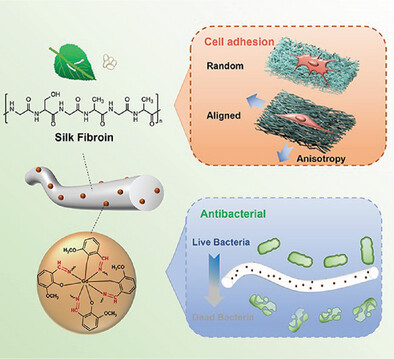
A fibrous hydrogel with an anisotropic topological structure that mimics the natural extracellular matrix is developed for the treatment of infected wounds. This hydrogel incorporates an innovative intrinsically antibacterial material composed of polyhexamethylene biguanide, O-Vanillin, and Gd3⁺, demonstrating excellent biocompatibility and robust antibacterial activity.




